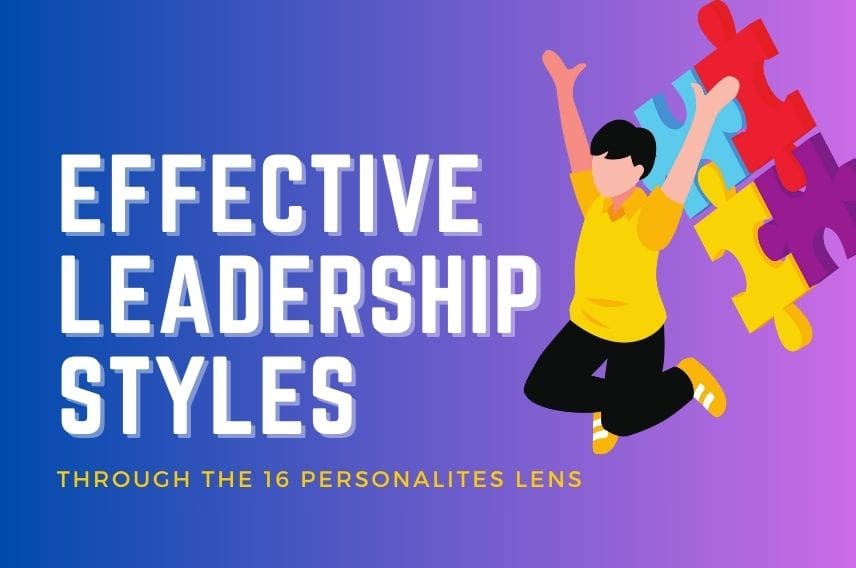Forget “one size fits all” leadership. In today’s dynamic business landscape, the most effective leaders understand their inherent strengths and weaknesses, recognizing how these translate into unique leadership styles. Enter the world of the 16 Personalities, a powerful framework that unlocks the secrets of individual psychology and reveals the spectrum of potential leadership approaches.
Whether you’re a captain, a coach, or a catalyst, your preferred leadership style is deeply woven into the fabric of your personality. By understanding your type according to the 16 Personalities framework, you can harness your natural talents, navigate challenges with finesse, and inspire your team to soar.
Exploring the Leadership Landscape:
The 16 Personalities categorise individuals based on four key dimensions:
- Energy: Introversion (I) or Extraversion (E)
- Information: Sensing (S) or Intuition (N)
- Decisions: Thinking (T) or Feeling (F)
- Structure: Judging (J) or Perceiving (P)
By combining these preferences, we arrive at the 16 unique types, each with distinct strengths and leadership tendencies. Let’s explore some key leadership styles through the lens of the 16 Personalities:
Commanding Leaders:
- Think Gordon Ramsay in the kitchen: These action-oriented leaders, like ESTJs, ENTJs, and ESTPs, thrive in high-pressure situations. They set ambitious goals, demand clear execution, and hold themselves and others accountable. While their decisiveness inspires progress, they can miss out on diverse perspectives by prioritising efficiency over consensus.
- Strengths: Crisis management, decisive action, delegation, clear expectations.
- Weaknesses: Micromanagement, emotional disconnect, lack of flexibility.
- Approach: Balance decisiveness with open communication, delegate effectively while empowering team ownership, and encourage controlled experimentation for continuous improvement.
Visionary Leaders:
- Imagine Elon Musk guiding SpaceX: INFJs, ENFJs, and INTJs excel in painting a compelling future, drawing teams together with shared aspirations. They think strategically, embrace innovation, and navigate complexities with clarity. However, their focus on the grand vision can sometimes overlook immediate operational needs.
- Strengths: Big-picture thinking, strategic planning, innovation, inspiring ambition.
- Weaknesses: Neglecting daily operations, overlooking practical details, demanding unwavering commitment.
- Approach: Ground your vision in realistic plans, build strong execution teams, and regularly connect your vision to daily tasks to maintain team alignment.
Democratic Leaders:
- Picture Oprah Winfrey motivating her audience: ENFPs, ENTPs, and ESFPs bring a contagious enthusiasm and value collaboration. They encourage open communication, actively seek input, and foster a positive, inclusive environment. However, their emphasis on consensus can sometimes slow down decision-making.
- Strengths: Collaboration, building rapport, communication, fostering creativity.
- Weaknesses: Difficulty with tough decisions, potential for digressions, managing team dynamics.
- Approach: Set clear boundaries for discussion and decision-making, leverage brainstorming sessions for creative solutions, and delegate ownership for specific tasks while maintaining team alignment.
Servant Leaders:
- Think Mother Teresa dedicating her life to others: ISFJs, ISTJs, and ESFJs naturally put their team’s needs first. They are supportive, empathetic, and prioritise trust-building. While their dedication inspires loyalty, they might struggle with prioritising their own needs and setting boundaries.
- Strengths: Empathy, team support, trust-building, fostering development.
- Weaknesses: Reluctance to delegate, difficulty saying no, neglecting self-care.
- Approach: Delegate effectively while offering guidance and support, set and communicate clear expectations, prioritise your own well-being to maintain sustainable leadership.
Coaching Leaders:
- Imagine Brené Brown guiding vulnerability workshops: INFPs, INTPs, and ISFPs believe in unlocking individual potential. They provide constructive feedback, encourage continuous growth, and nurture individual talents. However, their focus on individual development might sometimes overlook team cohesion and collective objectives.
- Strengths: Personalised feedback, strengths-based approach, talent development, fostering continuous learning.
- Weaknesses: Neglecting team goals, overly individualised strategies, difficulty with accountability.
- Approach: Balance individual development with team objectives, set clear expectations for both individual and team goals, celebrate both individual and collective achievements.
Remember, these are just glimpses into each leadership style. The beauty of the 16 Personalities framework lies in its nuance and adaptability. Embrace your unique type, hone your strengths, and constantly refine your approach to become the leader your team needs.
Finding Your True North:
Now, for the exciting part: how do you discover your leadership style? Several excellent resources offer free or paid personality assessments based on the 16 Personalities framework. Here are a few popular options:
- 16Personalities: The official website for the 16 Personalities system offers a free, detailed test with insightful results and personalised leadership breakdowns.
- Truity: Another well-respected free assessment tool, Truity provides comprehensive reports highlighting your personality type, strengths, weaknesses, and career-related insights.
- Myers & Briggs Foundation: The official MBTI assessment, offered by the Myers & Briggs Foundation, is a gold-standard in personality identification. While it carries a fee, it’s often used in professional settings and offers in-depth analysis.
Remember: There’s no “best” leadership style. The key is to leverage your natural strengths, address your weaknesses, and adapt your approach to the specific situation and team needs. Embrace your unique 16 Personality type and watch your leadership flourish!
Actionable Takeaways:
- Take a personality assessment: Discover your strengths, weaknesses, and preferred leadership style through one of the resources mentioned above.
- Identify your dominant functions: Each personality type has four “functions” that influence behaviour. Understanding your dominant functions can further refine your leadership approach.
- Embrace your strengths: Build your leadership persona around your natural talents. Are you a visionary, a motivator, or a detail-oriented organiser? Play to your strengths and inspire your team.
- Develop your “shadow functions”: Each personality type has four “shadow functions” representing less developed aspects. Exploring and integrating your shadow functions can round out your leadership skills.
- Seek feedback: Actively solicit feedback from colleagues and team members to gain valuable insights into how your leadership style resonates with others.
By embarking on this journey of self-discovery through the 16 Personalities lens, you’ll gain a deeper understanding of your inherent leadership potential. So, go forth, explore your type, and lead with authenticity and purpose!
